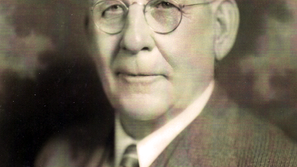Opinion: Speed limit — gallop to Autobahn
- Jim Glynn
- Jul 24, 2021
- 4 min read
Remember driving along the highway, making good time, enjoying a road that was pretty much free of cars and trucks. Remember looking in your rearview mirror and seeing that OS light. (I don’t need to explain what OS stands for because that’s what everybody says when that blue light is detected.)
Remember that citation that you received for exceeding the posted speed limit? Remember paying the fine or attending Traffic School? Ever wonder how that started? Well, blame New York.
Although California has generally been considered to be the bellwether state where trends begin since the 1950s, it was colonial America that first put the clamps on speeding in this country. Almost unbelievably, there was a speed limit imposed on vehicles more than a century before the Declaration of Independence.
Early laws
Like many other laws, our “basic rule,” as outlined by the federal government (49 CFR 392.14), is based on English Common Law, sometimes referred to as the “reasonable man” requirement. With regard to the operation of motor vehicles, this is most simply stated in the Vienna Convention on Road Traffic, which states: “Every driver of a vehicle shall in all circumstances have his vehicle under control to be able to exercise due and proper care and to be at all times in a position to perform all maneuvers required of him.”
In the United States, this was more specifically defined in New Amsterdam (now New York) in 1652. At that time, the colony leaders issued a decree that “no wagons, carts or sleighs shall be run, rode or driven at a gallop” at the risk of incurring a fine starting at “two pounds Flemish,” about $150 in today’s currency. Of course, in those days there were no motor-driven vehicles. But, in New York City, cabdriver Jacob German was arrested for driving his electric taxi at 12 mph in 1899.
German’s egregious act paved the way for the first state law regulating speed. In 1901, Robert Woodruff submitted a bill to the Connecticut General Assembly that proposed a motor-vehicle speed limit of 8 mph within city limits and 12 mph outside the cities. When the bill passed into law, the limits were set at 12 mph in cities and 15 mph on country roads.
During the twentieth century when cars were becoming part of the American lifestyle, speed laws began popping up in various places. In California, for example, Los Angles passed laws limiting speed to 15 mph in residential areas, 20 mph in business districts, and 35 mph in the country. However, as late as 1930, twelve states had no speed-limit laws, and 28 states did not even require a driver’s license.
Technology and infrastructure
Advances in technology created engines and drivetrains that could propel cars faster and faster. Under President Eisenhower’s Federal Aid Highway Act of 1956, the federal government paid 90 percent of the cost of construction of interstate highways, each of which was required to be a freeway with at least four lanes and no at-grade crossings. Speed limits gradually increased until 65 mph was common on most of the new wide and well-lighted roadways.
(Incidentally, Eisenhower’s vision was not developed out of concern for the convenience of automobile drivers, but rather for the purpose of national defense. During WWII, Eisenhower was in charge of all of the allied troops in Europe, and he was frustrated at not being able to move men and ordnance from place to place because of the lack of adequate roadways, especially in the rural areas of the Western European countries.
In the event that the United States were ever attacked by outside forces, he wanted to make sure that troops, trucks, tanks, and so forth could be easily transported to where they were most needed. Our current national highway system is correctly credited to his administration.)
Federal limitation
In the early 1970s, OPEC (Oil Producing and Exporting Countries) restricted the sale of oil to the United States. The oil embargo sent gasoline prices through the roof and created long lines at filling stations, many of which often ran out of gas. Between 1973 and 1974, the price of a gallon of gasoline more than quadrupled.
In 1974, President Nixon signed a bill limiting the national speed limit to 55 mph as a gas-saving measure. In 1987, Congress rescinded Nixon’s law and increased speed limits on interstate highways to 65 mph. Then, in 1995, the National Highway System Designation Act repealed the maximum speed limit, returning control to states, many of which raised the speed limit to 70 mph.
What’s next?
In 2019, Senator John Moorlach of Orange County introduced a bill to the state legislature that could eliminate the speed limit on certain lanes of Interstate 5 and State Route 99. The bill proposed the construction of two additional northbound and southbound lanes on these freeways, and drivers would be allowed to exceed the 70-mph speed limit, relying on the “reasonable man” rule, which of course would be restated as the “reasonable person” rule.
There seems to be a two-fold motive behind Moorlach’s bill. First, he states that unrestrained traffic would actually produce less carbon dioxide by cutting down of the gasoline that’s expended by cars that are idle in traffic jams. Second, faster freeways would offer competition to the state’s beleaguered high-speed-rail system (HSR).
If you’ve driven the same roads and highways that I’ve traveled, you know that there is evidence to distrust the “reasonable person” rule. But, as a long-time opponent of California’s HSR plan, I favor the idea of driving to Bakersfield in less than two hours and having my car at my disposal, instead of taking the “bullet train,” and arriving maybe 15 or 20 minutes earlier in a city that has almost no public transportation and no car rental agency near the train depot.
• • •
Jim Glynn is Professor Emeritus of Sociology. He may be contacted at j_glynn@att.net.


























Comments